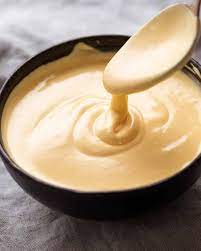Hollandaise sauce is a classic French sauce known for its rich, creamy texture and tangy flavor. Made with simple ingredients like butter, egg yolks, and lemon juice, hollandaise sauce is a versatile addition to many dishes, including eggs Benedict, asparagus, and seafood. In this comprehensive guide, we will explore the traditional method of making hollandaise sauce, along with tips, tricks, and variations to help you perfect this culinary masterpiece.
Table of Contents
Understanding Hollandaise Sauce
Hollandaise sauce is one of the five mother sauces in French cuisine, known for its emulsified combination of butter, egg yolks, and acidic ingredients such as lemon juice or vinegar. The sauce is typically served warm and is prized for its smooth texture and velvety mouthfeel.
Ingredients:
- 3 large egg yolks
- 1 tablespoon water
- 1 tablespoon lemon juice
- 1/2 cup unsalted butter, melted
- Pinch of salt
- Pinch of cayenne pepper (optional)
Equipment:
- Double boiler or saucepan and heatproof bowl
- Whisk
- Thermometer (optional)
Step-by-Step Instructions:
1. Prepare the Double Boiler:
- Fill the bottom of a double boiler with a few inches of water and bring it to a gentle simmer over medium heat. If you don’t have a double boiler, you can use a saucepan filled with water and a heatproof bowl set on top.
2. Whisk Egg Yolks and Water:
- In the top of the double boiler or heatproof bowl, whisk together the egg yolks and water until well combined. This helps to create a stable base for the sauce.
3. Heat the Egg Mixture:
- Place the double boiler or bowl over the simmering water, making sure the bottom doesn’t touch the water. Continue to whisk the egg mixture constantly until it thickens slightly and reaches a temperature of about 160°F (71°C). This process helps to cook the egg yolks and create a smooth texture.
4. Add Lemon Juice:
- Once the egg mixture has thickened, remove it from the heat and whisk in the lemon juice. The acidity of the lemon juice adds brightness and helps to balance the richness of the sauce.
5. Gradually Add Melted Butter:
- While whisking continuously, slowly drizzle the melted butter into the egg mixture in a steady stream. It’s essential to add the butter gradually to ensure that it emulsifies properly with the egg yolks, creating a smooth and creamy sauce.
6. Season to Taste:
- Once all the butter has been incorporated, season the hollandaise sauce with a pinch of salt and cayenne pepper, if desired. Taste and adjust the seasoning as needed.
7. Serve Immediately:
- Hollandaise sauce is best served immediately while still warm. If the sauce thickens too much or becomes too cool, you can gently reheat it over low heat, whisking constantly until smooth and creamy.
Tips and Variations:
- Use Clarified Butter: Clarified butter, which has had the milk solids removed, can give hollandaise sauce a smoother texture and richer flavor.
- Add Flavor Variations: Experiment with different flavor variations by adding ingredients such as herbs, spices, or mustard to customize the sauce to your liking.
- Adjust Consistency: If the hollandaise sauce is too thick, you can thin it out with a little warm water or lemon juice. Conversely, if it’s too thin, you can thicken it by whisking in a little more melted butter.
- Keep Warm: To keep hollandaise sauce warm while serving, transfer it to a heatproof bowl set over a pot of warm water or use a thermos.
Common Problems and Solutions:
- Curdled Sauce: If the sauce appears curdled or separated, it may have been heated too quickly or the butter added too rapidly. To fix, try whisking in a teaspoon of hot water or lemon juice until smooth.
- Too Thick Sauce: If the sauce becomes too thick, whisk in a little warm water or lemon juice until you reach the desired consistency.
- Uncooked Egg Yolks: If the egg yolks aren’t fully cooked, the sauce may have a raw egg taste. Make sure to heat the egg mixture to at least 160°F (71°C) to ensure that the yolks are fully cooked.
Mastering the art of hollandaise sauce requires patience, practice, and attention to detail, but the results are well worth the effort. With the right technique and a few simple ingredients, you can create a velvety-smooth sauce that elevates any dish it accompanies. Whether drizzled over poached eggs, steamed asparagus, or grilled fish, hollandaise sauce adds a touch of elegance and indulgence to any meal. So don your chef’s hat, grab your whisk, and get ready to impress your friends and family with your newfound culinary skills!
SF
